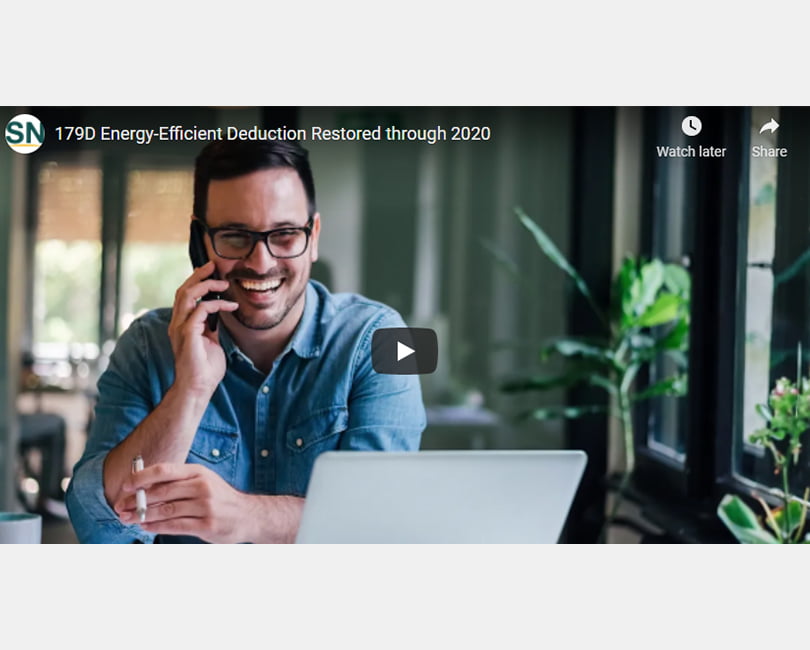Section 179D: Energy-Efficient Deduction Restored through 2020

We know that architectural and engineering firms love to find ways to save federal tax and increase their cash flow. Today, we have an idea to share with you that will do just that.
In the weeks before Christmas of 2019, Congress reintroduced something called the Energy-Efficient Commercial Building Deduction, or more commonly known as Section 179D. Many of you probably are familiar with Section 179D from past years when you may have taken advantage of this deduction, but as you also may know, this provision expired for projects completed up through and including December 31, 2017.
It wasn’t looking very hopeful that Congress was going to reinstate this deduction. Not only did they extend this provision, but they also put it in place retroactively for projects completed in 2018 and 2019, as well as those projects you have planned to be completed in 2020.
What Is Section 179D?
Back in 2005, as part of the energy policy act, Congress introduced this provision to encourage commercial building owners to take better steps to build their buildings more efficiently and save energy. By doing so, they granted up to $1.80 per square foot deduction if the building meets certain federal energy standards in three elements, the building envelope, the lighting system, and the HVAC system. The standards that are used to date to meet that provision are the 2007 ASHRAE Standards.
For the commercial building owner, this is a great break; they can get a deduction of up to $1.80 per square foot on their tax return in the year the building is put in service, rather than depreciating that similar cost over 39 years.
Governmental Buildings
However, a better deal was created for Architects and Engineers who are involved in the design of governmental buildings. A Governmental Agency, whether it was Federal, State, or Local, doesn’t pay federal taxes; therefore, they do not need this deduction. As such, they are allowed to assign that deduction to the designer of record, that could be the Architect, the MEP Engineer, the Structural Engineer, or anyone else who helped with the energy savings.
How Does It Work?
The first thing you’ll have to do is get that Governmental Agency to allocate the deduction to you, done through an allocation letter. Once you have that in place, you then commission an independent study to have the building reviewed to make sure it does meet those energy standards. Once they have certified that the building meets those standards, a report is issued, and you can give that report to your tax preparer, and they take the deduction on your tax return.
Now, the good thing for the AE firm is that you don’t own the building, so you’re not giving up the depreciation deduction that the commercial building owner is, you’re purely picking up that deduction on your current tax return. Think about a 100,000 square foot building, if it qualifies in all three elements, that’s a $180,000 tax deduction that goes directly to reducing your current year’s taxable income.
That’s a pretty powerful tax savings for those of you who do a lot of work in the public space!
If you think you have projects that will qualify, we’re happy to help you navigate through the process of gaining this deduction. Contact Tom Moul to learn more.



